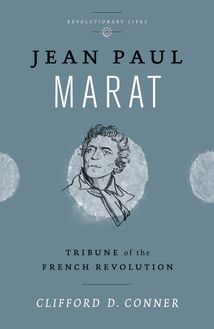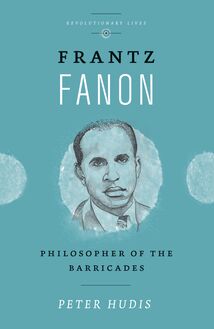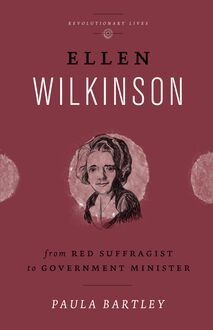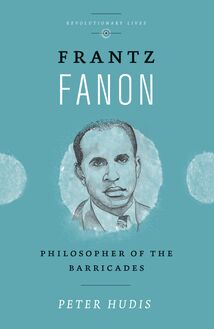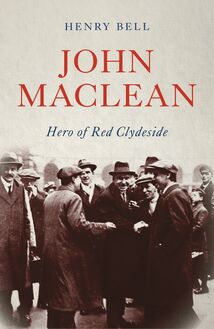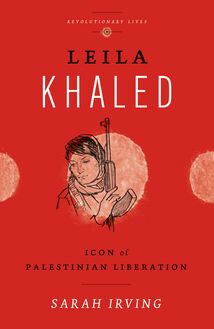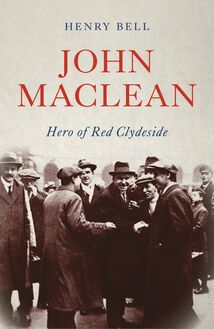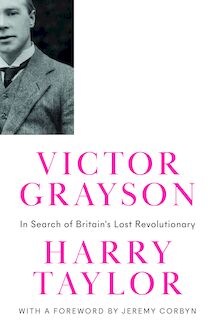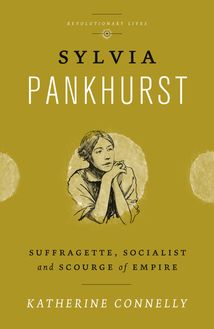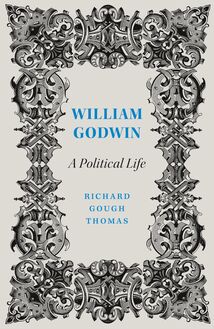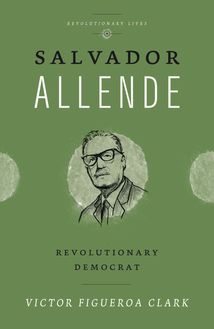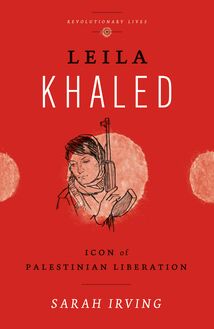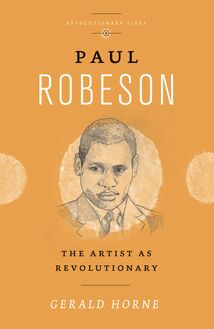Paul Robeson , livre ebook
144
pages
English
Ebooks
2016
Vous pourrez modifier la taille du texte de cet ouvrage
Obtenez un accès à la bibliothèque pour le consulter en ligne En savoir plus
Découvre YouScribe en t'inscrivant gratuitement
Découvre YouScribe en t'inscrivant gratuitement
144
pages
English
Ebooks
2016
Vous pourrez modifier la taille du texte de cet ouvrage
Obtenez un accès à la bibliothèque pour le consulter en ligne En savoir plus
Publié par
Date de parution
20 janvier 2016
Nombre de lectures
1
EAN13
9781783717569
Langue
English
Poids de l'ouvrage
1 Mo
Gerald Horne's biography uses Robeson's remarkable and revolutionary life to tell the story of the 20th century's great political struggles: against racism, against colonialism, and for international socialism. This critical and searching account provides an opportunity for readers to comprehend the triumphs and tragedies of the revolutionary progressive movement of which Robeson was not just a part, but, perhaps, its most resonant symbol.
1. 'The Best Known American in the World'
2. Rising Star
3. Rising Revolutionary
4. From Moscow to Madrid
5. 'The Tallest Tree in Our Forest'
6. 'Black Stalin'?
7. Robeson: Primary Victim of the 'Blacklist'
8. Britain Beckons
9. Triumph—and Tragedy
10. Death of a Revolutionary
Notes
Index
Publié par
Date de parution
20 janvier 2016
Nombre de lectures
1
EAN13
9781783717569
Langue
English
Poids de l'ouvrage
1 Mo
Paul Robeson
Revolutionary Lives
Series Editors: Sarah Irving, University of Edinburgh; Professor Paul Le Blanc, La Roche College, Pittsburgh
Revolutionary Lives is a series of short, critical biographies of radical figures from throughout history. The books are sympathetic but not sycophantic, and the intention is to present a balanced and, where necessary, critical evaluation of the individual’s place in their political field, putting their actions and achievements in context and exploring issues raised by their lives, such as the use or rejection of violence, nationalism, or gender in political activism. While individuals are the subject of the books, their personal lives are dealt with lightly except insofar as they mesh with political concerns. The focus is on the contribution these revolutionaries made to history, an examination of how far they achieved their aims in improving the lives of the oppressed and exploited, and how they can continue to be an inspiration for many today.
Also available:
Salvador Allende:
Revolutionary Democrat
Victor Figueroa Clark
Sylvia Pankhurst:
Suffragette, Socialist and Scourge of Empire
Katherine Connelly
Hugo Chávez:
Socialist for the Twenty-first Century
Mike Gonzalez
Percy Bysshe Shelley:
Poet and Revolutionary
Jacqueline Mulhallen
Frantz Fanon
Philosopher of the Barricades
Peter Hudis
Ellen Wilkinson:
From Red Suffragist to Government Minister
Paula Bartley
Leila Khaled:
Icon of Palestinian Liberation
Sarah Irvin
Gerrard Winstanley:
The Digger’s Life and Legacy
John Gurney
Jean Paul Marat:
Tribune of the French Revolution
Clifford D. Conner
www.revolutionarylives.co.uk
Paul Robeson
The Artist as Revolutionary
Gerald Horne
First published 2016 by Pluto Press 345 Archway Road, London N6 5AA
www.plutobooks.com
Copyright © Gerald Horne 2016
The right of Gerald Horne to be identified as the author of this work has been asserted by him in accordance with the Copyright, Designs and Patents Act 1988.
British Library Cataloguing in Publication Data A catalogue record for this book is available from the British Library
ISBN 978 0 7453 3531 5 Hardback
ISBN 978 0 7453 3532 2 Paperback
ISBN 978 1 7837 1755 2 PDF eBook
ISBN 978 1 7837 1757 6 Kindle eBook
ISBN 978 1 7837 1756 9 EPUB eBook
This book is printed on paper suitable for recycling and made from fully managed and sustained forest sources. Logging, pulping and manufacturing processes are expected to conform to the environmental standards of the country of origin.
Typeset by Stanford DTP Services, Northampton, England
Simultaneously printed in the European Union and United States of America
Contents
1.
“The Best Known American in the World”
2.
Rising Star
3.
Rising Revolutionary
4.
From Moscow to Madrid
5.
“The Tallest Tree in Our Forest”
6.
“Black Stalin”?
7.
Robeson: Primary Victim of the “Blacklist”
8.
Britain Beckons
9.
Triumph—and Tragedy
10.
Death of a Revolutionary
Notes
Index
1
“The Best Known American in the World”
P aul Robeson—activist, artist, athlete—experienced a dramatic rise and fall, perhaps unparalleled in U.S. history. From consorting with the elite of London society and Hollywood in the 1930s, by the time he died in 1976, he was a virtual recluse in a plain abode in a working-class neighborhood of Philadelphia.
What helps to explicate this tragic arc of his life is a fateful decision he made when fascism was rising: he threw in his lot with those battling for socialism and decided to sacrifice his thriving artistic career on behalf of the struggle against Jim Crow—or U.S. apartheid.
He was a forerunner of the likes of Malcolm X and Dr. Martin Luther King, Jr. In fact, one cannot begin to understand the lives and trajectories of those two men without considering Robeson. Like Malcolm, he was a militant: a turning point in his dramatic fall was when he confronted President Harry S. Truman face-to-face in the White House, berating him because of the lynching of African-Americans and Washington’s lassitude in confronting same. However, because Robeson was multilingual and lived abroad for years, he was able to develop a global appeal that dwarfed what the Muslim Minister only sought to accomplish in the final months of his life. Like Dr. King he had a mass appeal among African-Americans. But, unlike this Nobel Laureate, Robeson was not only an artist whose performances stirred emotions and fealty worldwide, he was also allied with a then rising socialist left and allied trade unions (both of which too had global ties), providing this performer with a reach that even Dr. King at his height found difficult to match.
The argument of this book is that you cannot fully appreciate how the Jim Crow system came to an end without an understanding of the life of Paul Robeson. Robeson pioneered the struggle against Jim Crow throughout the 1930s and 1940s. It was only with Robeson’s fall that King and Malcolm could emerge as they did; the undermining of Robeson created a vacuum that these two leaders filled.
* * *
It was early 1952 and legions from Nelson Mandela’s African National Congress were on the march in Johannesburg. But what struck the journalist covering this anti-apartheid demonstration was the singing voice pouring forth from loudspeakers, as thousands strode forcefully: it was Paul Robeson’s. 1 This was an act of defiance in that the authorities there had banned his recordings as early as 1949. 2 “They sing their songs of protest,” chortled Robeson then, “including some of mine, may I modestly add.” 3
The novelist Howard Fast wrote with accuracy during this era that “there is no child in Eastern Europe who cannot sing you one of the favorite songs of Paul Robeson . . . .” 4 Yet another journalist striding through Jerusalem a few years later was struck to hear Robeson’s voice emerging from the window of a sidewalk abode. 5 In 1957, Robeson’s wife commented that “his records are played regularly by popular demand over [the BBC] . . . over national networks and in public places in Europe, the Soviet Union, China, in Asia and Africa. A friend told us only a few days ago that he had been in a supermarket in Mexico recently and heard Paul singing ‘Ol’ Man River.’” 6 Two years later, Nobel Laureate Pablo Neruda ecstatically told Robeson that “the whole people of Chile love you” but his homeland was not alone since “Peru, Argentina, Bolivia, Brazil” were of a like mind. “Everywhere you are admired,” he insisted. 7
Less than a decade later in 1968 Robeson’s birthday was celebrated widely in China and, it was said, deemed to be “an event of major international significance,” not simply because of his socialist beliefs but because his artistry ranked him alongside “Caruso and Chaliapin as a singer . . . .” 8
Born in 1898, Paul Leroy Robeson, a descendant of enslaved Africans in the U.S., was globally renowned—not just as a singer but as an actor and athlete and political activist. As a singer and actor, he was as celebrated as Michael Jackson and Denzil Washington would be; as an athlete, he was as illustrious as Mario Balotelli; as an activist, he carried the moral weight of Nelson Mandela.
He was “probably the most famous living Negro” said the tribune of the U.S. elite, TIME magazine in 1943. 9 No, said an admiring reporter in 1964, upping the ante, as he termed him “the best known American in the world.” 10 The more reserved Nobel Laureate, Linus Pauling, called him simply “one of the greatest men of the twentieth century . . . .” 11 The more reserved New Statesman said in 1936: “he is one of the most impressive actors alive.” 12 Coretta Scott King, the widow of Dr. Martin Luther King, Jr., was among those acclaiming him upon his death in 1976, calling him “one of the finest artists, most brilliant minds and greatest champions of human rights that has lived in this century.” 13 The Trinidadian intellectual, C.L.R. James, who collaborated with him on a remarkable play in London about the Haitian Revolution, asserted in 1983, “I do not believe that any human being in the twentieth century . . . achieved the world-wide fame and recognition that Paul Robeson did.” 14
The top [American] football coach, Lou Little, said of Robeson, “there has never been a greater player in the history of football . . . .” 15 Robeson’s skills on the gridiron were so advanced and involving, as it did, hand-to-hand combat and fancy footwork, that he was seriously approached to fight then heavyweight boxing champion, Jack Dempsey. 16 An acquaintance of Gene Tunney, the man who had bested Dempsey in the ring, recalled his saying that the next heavyweight boxing champion of the world could be, “if he wanted it, a young man named Paul Robeson.” 17
The razor-sharp reflexes of the burly 6ft 3ins Robeson, whose weight was well above 230 pounds, convinced boxing promoters that he would have acquitted himself well in the ring. Similar qualities he possessed—cat-like quickness combined with muscular brute force—also allowed Robeson to state credibly and modestly, “I was pretty good at basketball.” 18
Yet, it was left to Robeson’s comrade—the Father of Pan-Africanism, W.E.B. Du Bois—who in the 1950s, called Robeson “without doubt” the “best known American on earth” in that “his voice is known in Europe, Asia and Africa, in the West Indies and South America and in the islands of the seas. Children on the streets of Peking and Moscow, Calcutta and Jakarta greet him and send him their love.” Yet, with all this, there was a reigning anomaly: “only in his native land is he without honor and rights.” 19
The reason was simple: after U.S.–USSR relations plummeted post-1945, Robeson refused to join the consensus. His view was that just as the two powers collaborated against the ultra-right from 1941–45, this engagement should continue thereafter in pursuit of the apartheid backers at home and abroad and the colonialists too, whi
